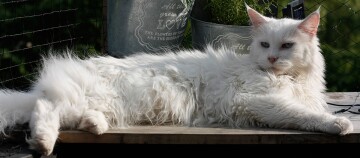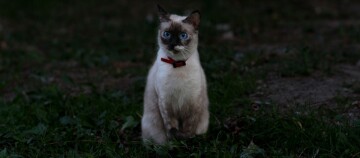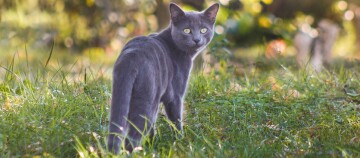British Shorthair – Babyface with Big Eyes, a Round Face & Small Ears
01.01.2024 - Reading time: 3 minutes
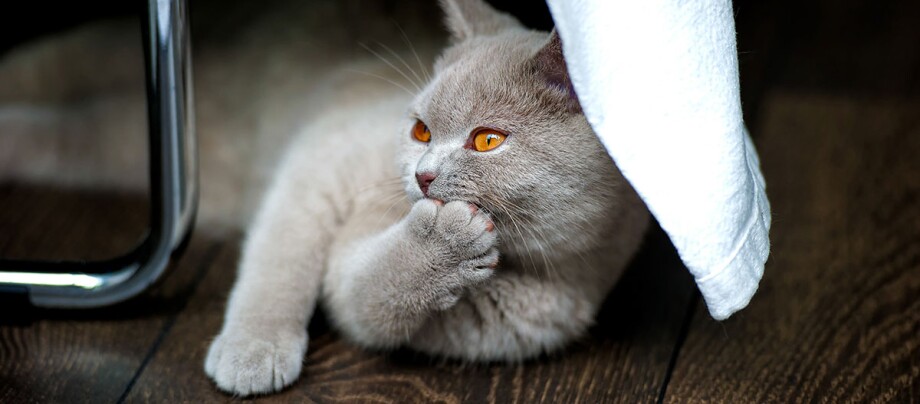
Very British! This regal purebred cat with its characteristic plush coat will suit you just fine if you are looking for a balanced house cat with composure. You can also see how the unique interaction between the calm nature and beautiful appearance has made BSHs the eye-catcher in TV programmes and commercials over the years.
Newsletter British short-hair
| Breed | British Shorthair, aka BSH |
| Origin | Great Britain |
| Size | medium to large, adult only at two years of age |
| Weight | Female cat 3.5 to 6 kg, male 6 to 8 kg |
| Physique | stocky, short build, muscular stature |
| body shape | large round head with pronounced chin, short, broad set ears, “babyface” cuteness |
| Eyes | mostly golden, blue in Points, green in silver animals” |
| Coat and colour | plush, short and dense coat with fine texture and good undercoat. FIFe recognises a colour spectrum comprising more than 300 solid, tortoiseshell, tabby and bicolour shades |
| Coat care | easy to care for, but moults comparatively heavily, regular brushing necessary |
| Special features | not afraid of water, tends to be overweight |
| Nature | gentle, calm and adaptable |
These beautiful British cats, whether in silver tabby, white or blue, as kittens or adult cats, as models for advertisements, too, have for decades so enchanted cat lovers that they are always to be found among the first ranks of the most popular purebred cats. Yet a few decades ago, the breed’s existence was severely endangered.
British Shorthair: Nature
Aficionados attribute different natures to the different colours of the British Shorthair: cream-coloured cats are cuddly, bicoloured British Shorthairs are vivacious, blue ones are aloof and red ones are affectionate. In general, the nature of the British Shorthair is characterised by comfort.
British Shorthair: Keeping
This cat is very adaptable and is just as happy being an indoor cat as an outdoor cat. British Shorthair cats like the company of other cats. However, they are initially rather distant towards strange cats or unfamiliar people. True to the motto “My home is my castle”, they eye visitors from a distance. The BSH is not prone to typical cat pranks and proves to be a very uncomplicated housemate. However, it does expect adequate attention from its owner: If it wants to cuddle, it does so immediately – it firmly demands its petting sessions. Since the British Shorthair inclines towards comfort, you should keep it on its toes a little and encourage it to play. Otherwise, it will be all too easy for this relaxed house cat to turn into a chubby couch potato. In general, the British Shorthair is very patient with children and other pets, as long as it has been suitably socialised.
British Shorthair: Colours
Since the 1970s, the British Shorthair has once again become a distinct breed with over 50 recognised single and multi-coloured varieties. Typical British Shorthair colours include solid colours such as black, white, blue, cream, red, chocolate, fawn, lilac and cinnamon. In addition, we find patterns such as Point, bi-colour and variations of the so-called tabby pattern: classic, spotted and tiger stripe. A common feature of the British Shorthair are the so-called “Odd Eyes” – different coloured eyes. Orange, copper, blue and green are typical eye colours.
Care of the British Shorthair
The British Shorthair is easy to care for – with one exception: it tends to “moult” because of its particularly fine fur. Especially during winter pelage, you will regularly need to reach for the brush and hoover.
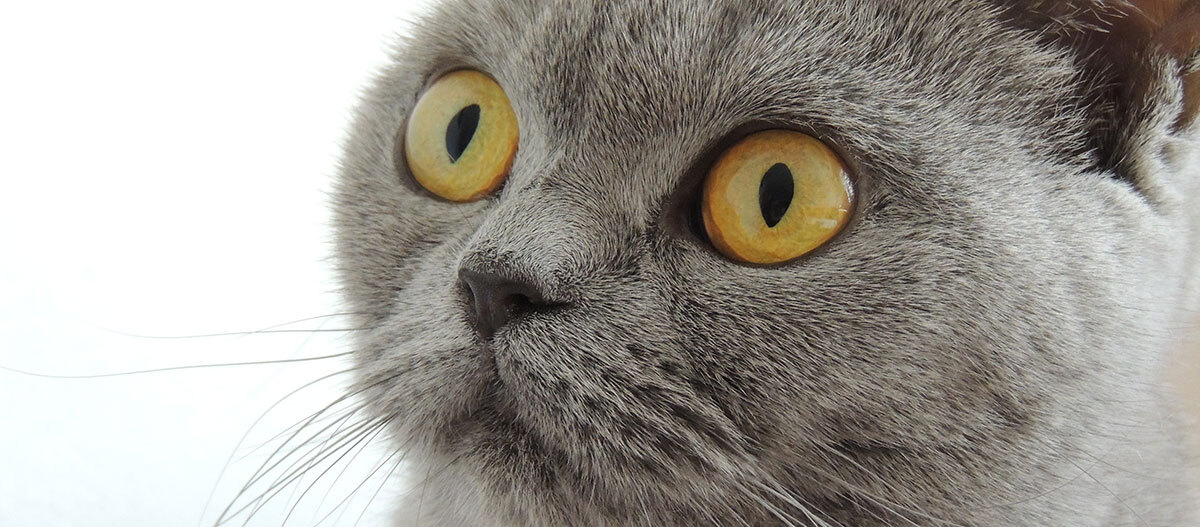
History of the British Shorthair
The Romans set the development of the British Shorthair in motion. They brought cats with them to Britain, where the animals gradually became a successful, strong breed due to the isolated island location and the climate. Initiated by cat lover Harrison Weir, a breed with tradition developed: Already as early as 1871, British Shorthair cats inspired a great deal of enthusiasm at the first cat show in London’s Crystal Palace. The appearance of the British Shorthair became even more compact and the coat much denser through crossbreeding with Persian cats. After the war, however, the breeding stock on the island had declined to such an extent that Persians and Chartreux, among others, had to be cross-bred again to help preserve the British Shorthair – with the result that Chartreux and blue British Shorthairs were temporarily united.
Special features of the British Shorthair
The BSH has another exceptional trait: as a rule, it is not afraid of water. Nevertheless, it should only be bathed in exceptional cases.
Video: “All about the British Shorthair”
British Shorthair Breed Profile
The British Shorthair is a walking babyface. Big eyes, a round face and small ears ensure people immediately fall in love with this breed. Read on for a detailed breed profile.
